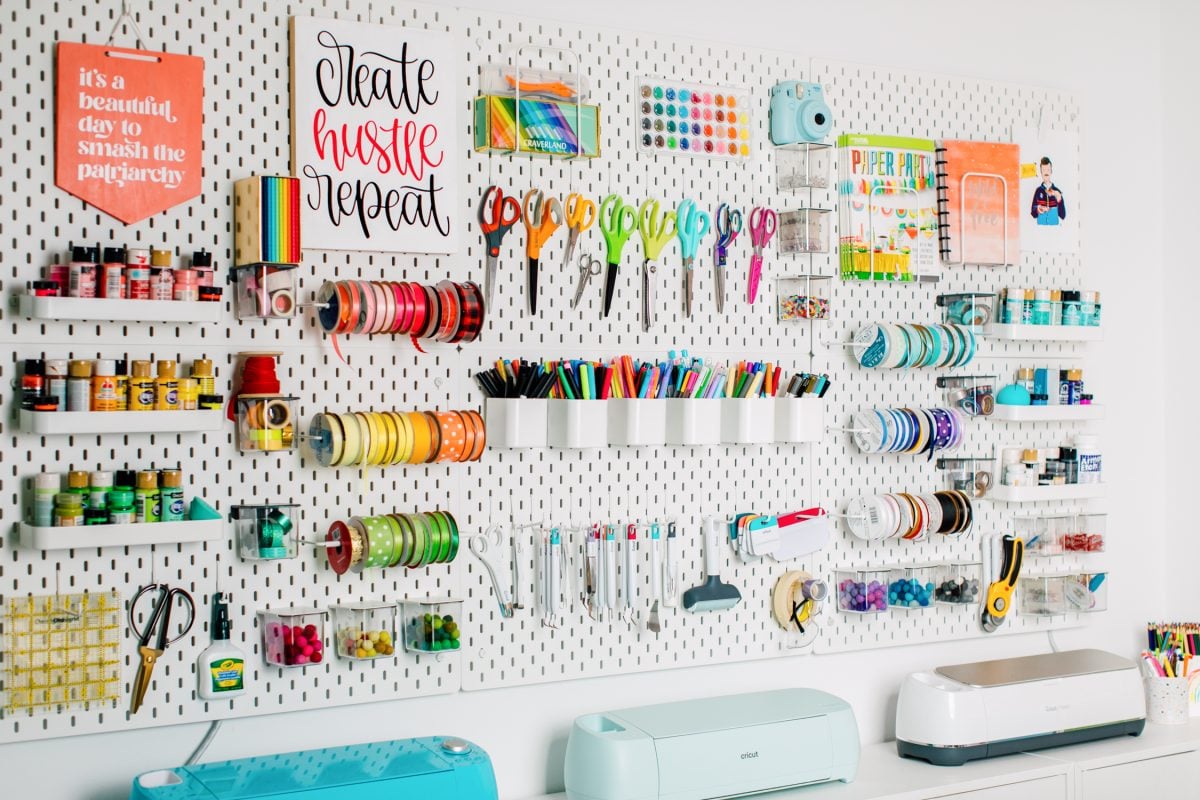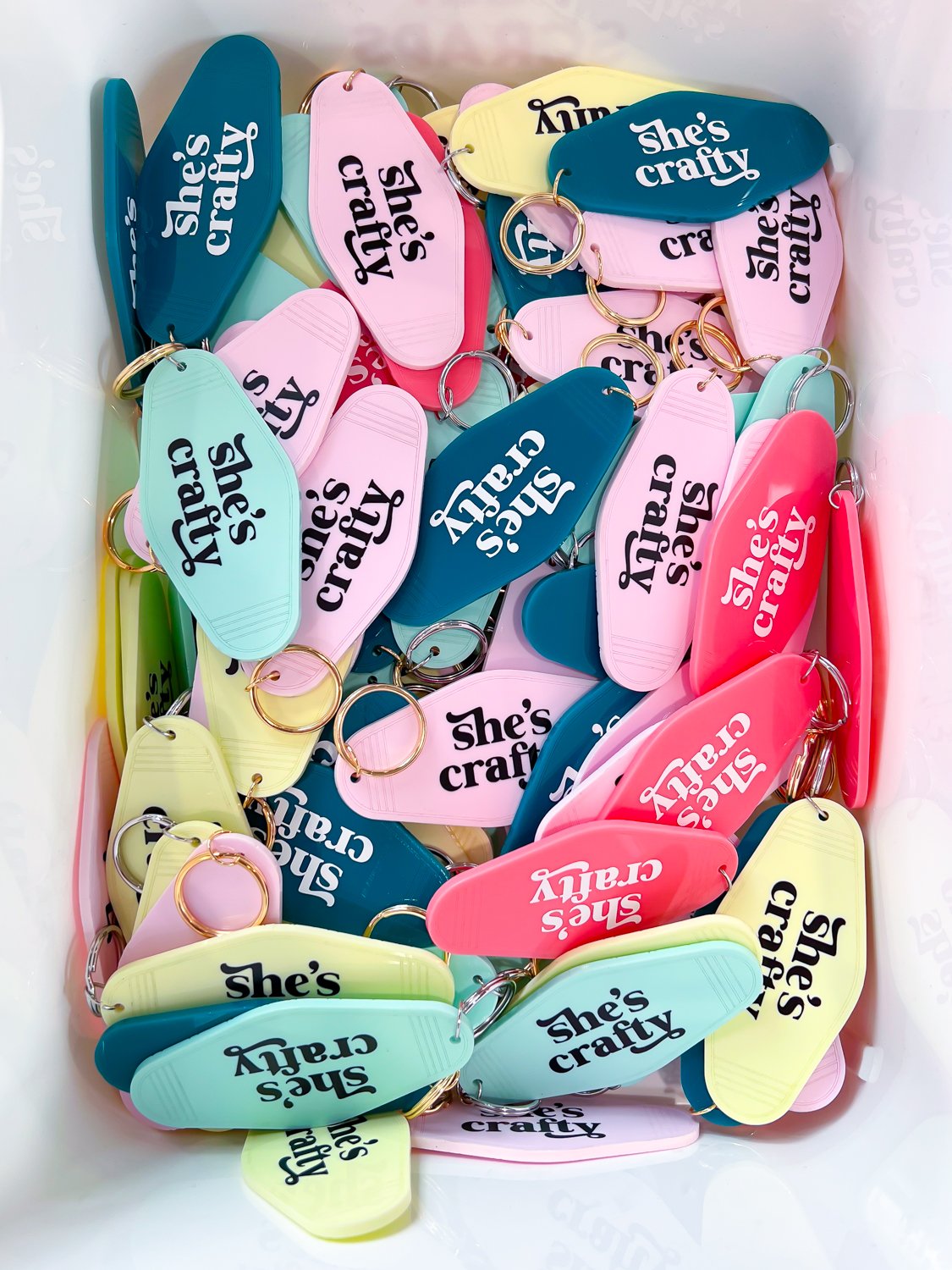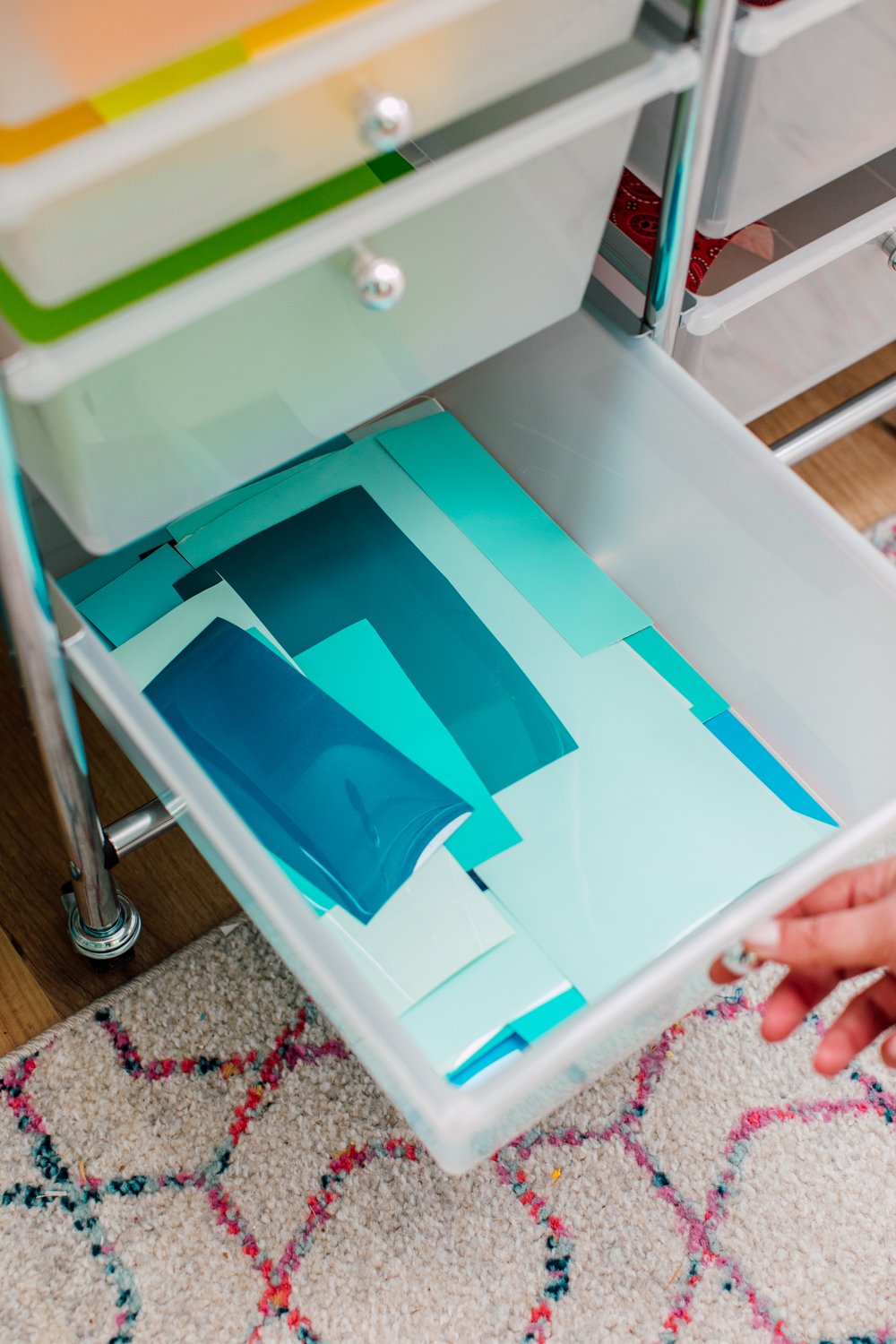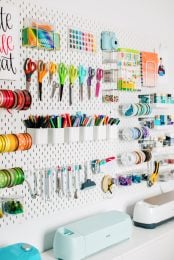Today I’ll discuss and debunk 5 craft business myths you may have heard! Whether you’re just starting out or growing your handmade business, let’s make sure you’re doing it the right way!

This post is a summary of a recent YouTube Live and podcast I did with Angie Holden! Jamela Payne was our guest speaker and debunked craft business myths with us. You can watch the video by clicking play below, or you can find the podcast on many of your favorite podcast players. The video and podcast cover even more than I’ve shared here, so if you have the time, give them a watch/listen!
Let’s get to know Jamela Payne!
Jamela is the crafty blogger behind Color Me Crafty. You may recognize her name from the crafting camps Angie Holden and I host. She’s joined us as a crafting expert many times! Jamela started her craft business in 2017 after deciding she didn’t want to bartend anymore. She took a leap of faith and quit her job to pursue her passion full-time.

She was primarily crafting t-shirts and epoxy tumblers. However, she found her niche with mom sport shirts using glitter iron-on vinyl. She had such an active, local following that she decided to go into business for herself. She did all of this without spending a ton of money that she didn’t have.
Since then, Jamela has built an impressive craft business and blog. We chatted with her to help us debunk crafty business myths.
Let’s dive right into those ever-popular craft business myths!
1. You need to sell anything and everything to be successful
Do you need to sell anything and everything to be successful?
No!
Jamela is the prime example of this! When she started her business, she was selling shirts to moms of kids playing sports. She personalized the shirts with names and made it even more unique with glitter iron-on. Not only did she focus on one product, but she made it very memorable and unique. Word spread and business picked up!
This is why niching down is so important. It allows you to focus on one (or a few) products and really become proficient at that craft. When it looks perfect and people are so impressed with the quality, word will spread and you will gain more orders. If you are making a hundred different products, you’ll never become an expert at one thing. You’re likely just making a ton of mediocre products that may sell.
Sticking to a few products also keeps start up costs low. The more products you sell, the more supplies you need. You will likely end up spending money on items you don’t use and taking up precious space, as well!

There is also cost-savings in buying materials in bulk. If you focus on one product, you can bulk order and save yourself money. In the end, this is more revenue back in your pocket!
Start with a few items and the supplies needed for those items. Once you master an item, you can expand as it makes sense—within your budget and means!
2. You need a ton of money to start a craft business
Do you need to have a lot of money to start a craft business?
No!
As mentioned in myth #1, you can start your business with items and materials you have on hand. In fact, it’s much less expensive to start this way!
In Jamela’s case, she already had some products and machinery needed to start her business full-time because she had been a hobby crafter. If you are just getting started in a certain craft, you may need to buy a new machine, such as a Cricut or a laser. So there may be a larger upfront cost. However, focus on one thing at a time. Do not run out and buy ALL the machines and all the supplies! You can’t master it all at once.
In many cases, you may start local and rely on word of mouth. You don’t need to invest in a website upfront. In other cases, you may want/need that website to get started. Again, this will depend on the type of business you’re running.
However, if you are relying on work of mouth and using places like Facebook marketplace to accept orders, you’ll want to be sure you are taking all payment up front. Do not take a deposit or partial payment for something that is custom. You won’t be able to sell it again and will be out the money. You want to protect your investment in time and materials. This helps you focus on turning those start up costs into profit!
3. Crafting is just a hobby, you can’t make money.
Many people believe you can’t truly make money from a craft business. It’s a hobby.
That’s not true!
However, in order to make money from a craft hobby, you have to treat it like a business! It may start out as a hobby, but once you begin to think of it like a business, it will become one.
Again, this is where it is important to niche down. You want to truly master your craft so people take you seriously and believe you are the expert in your craft item(s). Make sure you are creating a high quality item each and every time you make something!
Another thing is to make sure you are valuing your worth! Your time is money, especially if your business is your livelihood.
Be sure you are not only charging for your time, but also your materials. If you are creating a shirt, you need to charge for more than just the shirt and glitter vinyl. You need to charge for your time, the time using the machine, materials such as mats, blades, etc. That is all something you should consider when pricing your products and making enough profit to turn your hobby into a business.

Now, let’s talk a bit about turning your passion into profit. Jamela has a FREE master class called Profit First for Crafters. Profit First is a mindset that prioritizes paying yourself first in your business. It’s a great tool for anyone who wants to see their business grow and learn to manage finances effectively. I actually use Profit First in my own business. It’s been a game changer for me! You can sign up for Jamela’s free masterclass here!
As mentioned in craft business myth #2, make sure you are taking payments up front and aren’t working for free. A lot of times, family and friends are the hardest to buy into this. They wouldn’t ask Target for a discount or something for free, though! Don’t let people take advantage of you just because you’re a small business or happen to know them. Value your worth!
4. Everyone will love my crafts
Will everyone love your crafts?
Probably not.
But, that’s okay! Not everyone is your customer. You and your products are not for everyone, and that’s totally fine.
So, how do you find that ideal customer?
First and foremost, pay attention to what people are asking you for. If you made one glitter sport mom shirt and 50 more people are asking for it, well… that’s probably your target audience.
Make sure you are creating a really good product for those people because they will spread the word and continue to bring you more friends and people like them. Before you know it, you’ll have a whole group of “your people”.
Also, pay attention to the feedback you receive. Remember, bad feedback isn’t necessarily “bad”. Sometimes it just means you need to improve part of your process. It’s a good way to learn where you can improve and keep those happy customers coming back again and again.
5. Success happens overnight.
So, does everyone start making money from their crafts instantly?
Definitely not!
Unless you happen to go viral (which is VERY rare), you are likely going to work at your business for a while before seeing any huge profit margin. But, that’s okay. Do not let it discourage you!
Many crafters have been working at their craft as a hobby for a long time. They may have a head start on someone who is just getting started. Persistence is key!
Jamela has actually been crafting in some capacity since she was 6 years old! Many crafty business owners have crafted in some form since they were very young. Crafting success doesn’t just happen overnight—even though it can appear that way on social media!
The way to grow your business is to become and expert and really perfect your craft. This takes time! Find ways to stand out. Instead of making a shirt with plain colored iron on, use glitter, like Jamela did. Make yourself memorable in some way. Personalization is also a great way to do this! You’re able to provide a unique one-of-a-kind item to someone. You can also charge more for these items and eventually make more money.
I hope this discussion helped you understand a bit more about starting a craft business the right way and common craft business myths that just aren’t true. Like I mentioned above, we covered so much more on the podcast episode. We opened it up to listener questions, as well! If you’d like to check those out, definitely go back and catch the YouTube live or listen to us at craftingforprofitlive.com!



Leave A Reply!